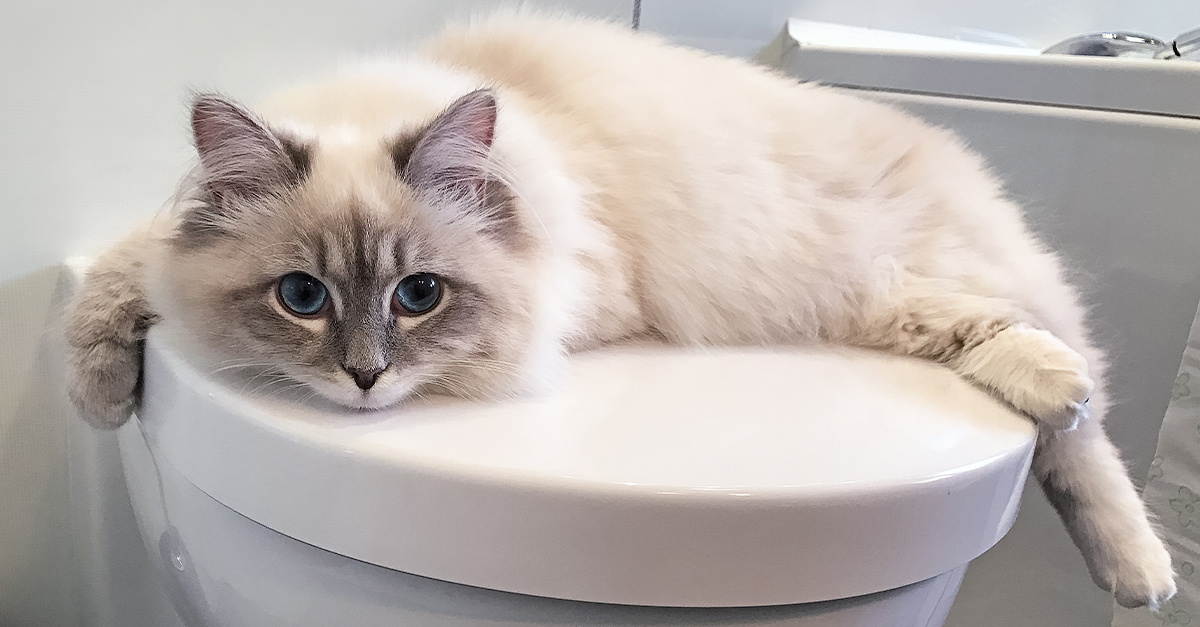Dangers of Flushing Cat Poop Down Your Toilet - Prevent Possible Problems
Dangers of Flushing Cat Poop Down Your Toilet - Prevent Possible Problems
Blog Article
The writer is making a number of great pointers on Can You Flush Cat Poo or Litter Down the Toilet? as a whole in the content following next.

Introduction
As cat proprietors, it's essential to bear in mind just how we dispose of our feline close friends' waste. While it might appear convenient to purge feline poop down the commode, this method can have detrimental effects for both the environment and human health and wellness.
Alternatives to Flushing
The good news is, there are safer and much more responsible means to dispose of pet cat poop. Consider the complying with alternatives:
1. Scoop and Dispose in Trash
One of the most usual technique of throwing away cat poop is to scoop it into a naturally degradable bag and toss it in the garbage. Make sure to make use of a devoted clutter scoop and take care of the waste without delay.
2. Use Biodegradable Litter
Go with eco-friendly cat clutter made from products such as corn or wheat. These clutters are eco-friendly and can be securely thrown away in the trash.
3. Bury in the Yard
If you have a yard, consider hiding pet cat waste in a marked area away from vegetable yards and water sources. Be sure to dig deep enough to prevent contamination of groundwater.
4. Install a Pet Waste Disposal System
Invest in a family pet garbage disposal system particularly designed for pet cat waste. These systems use enzymes to break down the waste, decreasing smell and environmental influence.
Health and wellness Risks
Along with environmental concerns, flushing pet cat waste can likewise position wellness threats to humans. Pet cat feces might contain Toxoplasma gondii, a bloodsucker that can trigger toxoplasmosis-- a potentially extreme health problem, specifically for pregnant women and people with weakened body immune systems.
Environmental Impact
Flushing pet cat poop presents unsafe virus and parasites into the water, positioning a considerable danger to marine ecosystems. These pollutants can adversely impact aquatic life and compromise water high quality.
Conclusion
Accountable family pet ownership prolongs past offering food and sanctuary-- it also includes proper waste monitoring. By avoiding purging pet cat poop down the bathroom and opting for alternate disposal approaches, we can decrease our environmental footprint and secure human wellness.
Why Can’t I Flush Cat Poop?
It Spreads a Parasite
Cats are frequently infected with a parasite called toxoplasma gondii. The parasite causes an infection called toxoplasmosis. It is usually harmless to cats. The parasite only uses cat poop as a host for its eggs. Otherwise, the cat’s immune system usually keeps the infection at low enough levels to maintain its own health. But it does not stop the develop of eggs. These eggs are tiny and surprisingly tough. They may survive for a year before they begin to grow. But that’s the problem.
Our wastewater system is not designed to deal with toxoplasmosis eggs. Instead, most eggs will flush from your toilet into sewers and wastewater management plants. After the sewage is treated for many other harmful things in it, it is typically released into local rivers, lakes, or oceans. Here, the toxoplasmosis eggs can find new hosts, including starfish, crabs, otters, and many other wildlife. For many, this is a significant risk to their health. Toxoplasmosis can also end up infecting water sources that are important for agriculture, which means our deer, pigs, and sheep can get infected too.
Is There Risk to Humans?
There can be a risk to human life from flushing cat poop down the toilet. If you do so, the parasites from your cat’s poop can end up in shellfish, game animals, or livestock. If this meat is then served raw or undercooked, the people who eat it can get sick.
In fact, according to the CDC, 40 million people in the United States are infected with toxoplasma gondii. They get it from exposure to infected seafood, or from some kind of cat poop contamination, like drinking from a stream that is contaminated or touching anything that has come into contact with cat poop. That includes just cleaning a cat litter box.
Most people who get infected with these parasites will not develop any symptoms. However, for pregnant women or for those with compromised immune systems, the parasite can cause severe health problems.
How to Handle Cat Poop
The best way to handle cat poop is actually to clean the box more often. The eggs that the parasite sheds will not become active until one to five days after the cat poops. That means that if you clean daily, you’re much less likely to come into direct contact with infectious eggs.
That said, always dispose of cat poop in the garbage and not down the toilet. Wash your hands before and after you clean the litter box, and bring the bag of poop right outside to your garbage bins.
https://trenchlesssolutionsusa.com/why-cant-i-flush-cat-poop/
We were guided to that editorial about Can You Flush Cat Poo or Litter Down the Toilet? through an associate on another website. Sharing is nice. You won't know, you may very well be helping someone out. Thank-you for going through it.
This Website Report this page